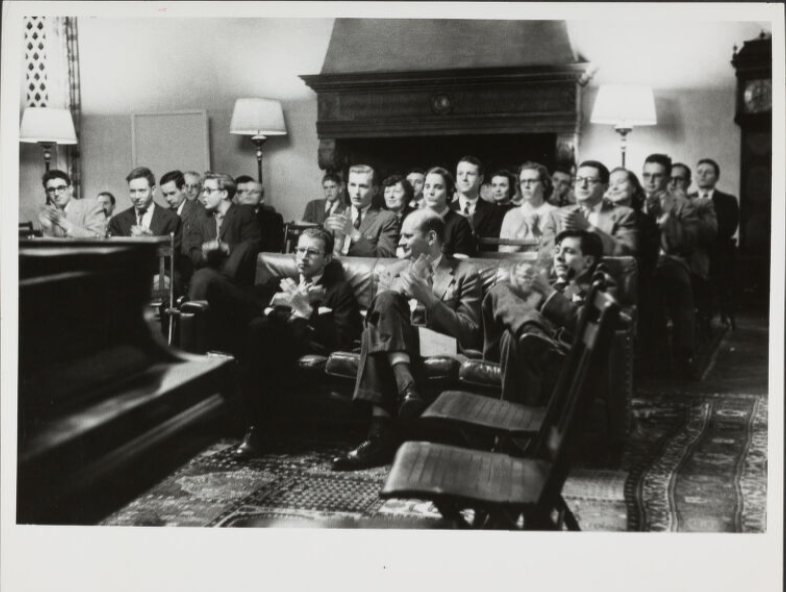Harvard’s Hallowed Halloween
Today, one might spend Halloween weekend partying it out at Currier’s Heaven & Hell or The Crimson’s own Crimween, both of which draw hundreds of students in elaborate costumes. But a century earlier, Halloween at Harvard was a more refined affair.
Eleanor S. Brooks, class of 1914, writing to her parents in 1913, detailed a “jolly halloween party” at South House, now Cabot House. The dining hall was “unusually pretty” with big fireplaces lit on each end, and jack-o-lanterns set atop mantels. The walls were lined with apples and doughnuts, and yellow crepe paper covered the sconces.
The grand revelry continued when partygoers arrived at the halloween bash adorned in masks and costumes. In contrast to the ornate costumes donned in today’s celebrations, several of the young “gentlemen” wore paper bags over their heads, and one girl even wrapped herself in burlap to imitate an “Egyptian mummy.”
Brooks loved the decorations of her hall, which included a big kettle turned into a witch’s cauldron for the play they put on for each other. She recalled taking creative liberties with her costume, including some mismatched stockings, a big red felt hat, a cheese cloth cape, and bloomers to complete the look. Artificial leaves in fall colors were scattered throughout the hall. Even over a hundred years ago, the Harvard students honored the sanctity of the fall season.
Brooks’ recounting of a modest Halloween celebration is one of the many relics held in the University Archives at Pusey Library, where ghosts of Harvard’s past are kept alive.
Between 1931 and 1960, masquerade parties were a Halloween staple but maintained an air of formality. Adams House in particular was known for hosting the most elegant masquerade events with a black tie theme. Dressed in black suits and gathered around a couch without their masks, the partygoer’s interpretation of a costume upheld their social status as the wealthy residents of Adams House.
Toward the 1970s and 1980s, masquerade parties took a turn. Young students searching for a fun night out turned to physical advertisements describing the event’s location, dresscode, and time of arrival. Invitations no longer emphasized a decadent night of formality and elegance, as seen in one bright orange flier with disco-ready figures inviting students to Mather House for a stay-up party and luring them with party punch. Halloween in the ’60s was defined by nights of debauchery starting at 11 and ending whenever people could remember to go home — not unlike the Halloween parties of today.
Music, too, became embedded in the Harvard Halloween experience. In the 1980s, the Harvard Krokodiloes and the Radcliffe Pitches joined forces to host a Halloween Jam. Concert tapes from the 1980 edition featured festive tunes to both celebrate the autumn season and showcase their skills with spirited covers of “The Monster Mash.”
Aside from the parties, Halloween at Harvard transcends into the supernatural. According to legend, many buildings host apparitions, phantoms, and spirits. Memorial Hall is home to ghosts and hauntings alike. Moreover, upperclassmen in Lowell House have reported seeing the ghosts of former Faculty Dean Elliot Perkins and poet Amy Lowell accompanied by the scent of cigars, which she frequently smoked. While Harvard’s tunnels have no reports of paranormal activity, they do reach extremely high temperatures and hold hidden entrances.
Twisted tales and fantasies are all part of Halloween and historical intrigue at Harvard, but first-hand accounts reveal how this highly-anticipated holiday has morphed across generations.
If only the students of yore could have lived long enough to experience today’s darties with 10 undergrads fiending over a can of Truly.



